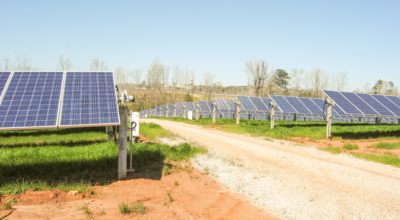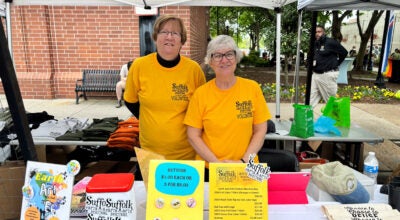Keeping it contained
Published 7:34 pm Thursday, April 29, 2010
In today’s world, living spaces are smaller and lives are busier than ever.
And while many people enjoy the taste and cost benefits of a homegrown garden, not everyone has the room or the time to maintain a full-fledged vegetable garden.
The solution may be a container garden.
“Container gardens are definitely increasing in popularity,” Smithfield Gardens General Manager JoEllen Gienger said. “Many people have a smaller place and don’t have big yards to plant in.”
While you can’t plant everything in containers, many of your favorite salad vegetables and herbs can be grown in them. All you need is an outside area with at least six hours of sunshine.
“You can grow just about anything in a container,” Gienger said. “They’re great. You just have to move the containers to where the sun is.”
Tomatoes, lettuces, herbs, radishes, peppers and cucumbers can all flourish in containers.
“You can grow various lettuces in a pot, pick it as you need it, and it just keeps growing,” Gienger said. “If you’re growing tomatoes or cucumbers, just put a tomato cage right into the pot and they’ll climb up. You can do peppers the same way.”
Some common vegetables that won’t do well in a pot are corn, okra, potatoes or squash.
Gienger said that if you are set on growing a vegetable that needs more room, you should plant a four-foot by four-foot garden. Most people will need a small plot of land, but it can be planted in a constructed box, as well.
Whether you’re planting in a box or in a pot, it’s important to have good drainage and good watering habits.
“You have to water about every day, but you need good drainage because otherwise the plants will drown,” Gienger said.
To help keep as much water in the soil as possible, plastic pots instead of clay pots are recommended. If you do decide to use clay pots, however, Gienger recommends cutting out the bottom of a plastic bag so it will drain at the bottom and placing the bag in the container before planting.
“That way it will hold the water better,” she said. “It’ll help you not to have to water as often, because in the summer, when it gets hot, you may have to water twice a day.”
Mixing soil-moist, which can be found at any garden store, into the soil before you plant can also help keep your plant hydrated.
Another important factor in maintaining a healthy container garden is ensuring it gets proper sunlight.
“Most vegetables and herbs need at least six hours of sun,” Gienger said. “But some herbs — like basil — only need four hours of sun. You can plant some of your herbs together in the same pot, but you need to make sure they all need the same amount of water and sun.”
Once you have your vegetables and herbs planted, it’s just a matter of watering them when needed. You won’t need to worry about weeding, and you can pick them when needed.
“It’s really the way to go,” Gienger said. “You just need to water before you go to work and pick them when they’re ready. It takes a lot less time than a big vegetable garden, and you get just as good of a product.”






